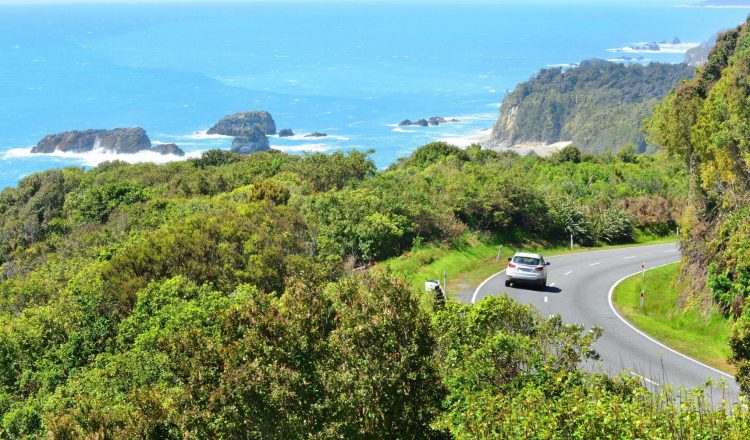假日驾驶
由于交通量增加、拥堵、疲劳以及人们在陌生环境中驾驶,在假日期间旅行时,您需要特别小心。保持礼貌、记住与他人分享道路以及安排频繁休息时间可以帮助您在这段时间开车时保持冷静。
为什么你需要保持警觉
- 路上的车辆越来越多,车辆越多意味着坠毁的风险越高。
- 许多人在陌生的道路上开车。
- 人们驾驶很长时间并且疲劳-通常是清晨或深夜。
- 由于热、交通堵塞、儿童嘈杂和普遍疲劳等因素造成的压力增加。
- 度假的人们可能对道路安全不太警惕,例如超速、疲倦时开车、不会起落。
- 假日期间有更多的饮酒驾驶。
你能做些什么来提高你的安全
您可以做出多种选择来提高度假旅程的安全性。你需要给予道路使用应有的关注和尊重。
提前计划
- 在开始旅程之前,请花点时间确保您和您的车辆安全。
- 计划您的旅行,以避免许多高速公路变得拥堵时最糟糕的交通高峰期。
- 足够的时间 —— 让旅程成为假期的一部分。
- 安排定期休息停止。
留出
对变化保持警惕
通常在假日期间,通过的车道会被关闭,以帮助减少拥堵并防止车道尽头交通合并的进一步延误。有时候会建议替代路线。
开车到条件
“状况” 不仅意味着天气。它还包括:
- 你正在走的道路
- 交通状况
- 速度(速度限制和 “安全速度” 可能有所不同)
- 例如你累了或者服用影响驾驶的药物
- 你的车辆和装载。
当心疲劳
长途旅行很累,驾车时疲劳可能会致命。去年,驾驶员疲劳是造成 54 人道路死亡和近 1000 人受伤的一个因素。计划事先获得足够的休息,以便开车新鲜。您应该提前计划旅行中休息的地方。
确定最安全的路线
有些路线比其他路线更安全。你需要知道,树木、沟渠、杆和狭窄的肩膀等路边危险可能会增加风险。十字路口可能很危险,没有中间障碍的繁忙道路也可能是危险的。有了这些知识,您可以根据条件调整驾驶,并在风险较高的农村道路上特别小心。
您可以从 kiwiRap (外部链接) 网站了解哪些路线更安全,哪些路线可能需要更加注意。该站点按地区对不同农村州立高速公路的安全风险进行评估。
在你旅行之前
- 让你的车检查一下。大多数车库都为轮胎胎面和压力、灯、制动器、冷却系统和其他部件提供安全检查。(调整良好的车辆也更节省燃油效率,因此您还可以节省燃油成本。)
- 检查你的健身许可证和车辆许可证是否是最新的。
- 检查你是否有当前的驾驶执照。如果已过期或接近到期,您需要在开始旅程之前进行续订。
购买或租用车辆时,始终选择您能负担得起的最安全的车辆。你可以在 Rightcar 查看车辆的比较安全性。(外部链接)
包装车辆时,请确保所有物品都安全存放。如果突然停止或坠毁,即使是小物体也可能成为危险的导弹。
检查你的拖车和大篷车
检查所有拖动附件并确保联轴器兼容。另外记得检查安全链、拖车灯、轮胎和刹车器。
请记住,如果你拖着拖车,你在露天道路上的最高车速限制是 90km/h。保持左边并在安全让其他车辆通过时拉过。
将重物均匀地装载到所有车轴上。
保持你的凉爽
假日驾驶可能会因繁忙的道路、观光旅客往往较慢、夏季令人窒息的热量以及冬季的冰冷表面可能令人沮丧。以下是一些简单而简单的方法来保持冷静并保持控制权:
- 保持礼貌-让其他人融入交通并在转动或更换车道之前指示。
- 除非通过,否则保持向左
- 如果你是一个速度较慢的司机,那么你可以在可以的时候拉过去让别人过去。
- 耐心等待,不要被其他司机的侵略行为挑起。
- 请记住,卡车和拖车辆的速度限制较低。等待经过的车道,或者直到你能看到前面的清澈道路和足够的空间来安全超车。
- 留意骑自行车者和其他道路使用者。给他们足够的空间。
- 心背后乡村道路上的马匹。
当
扣起来
不要仅仅因为有人没有被压制而让你的家庭假期受到悲剧的破坏。如果您是司机,则您负有法律责任,确保所有 15 岁以下的乘客都可以安全带或儿童约束条进行安全限制。7 岁以下儿童必须通过适合其尺寸和体重的经批准的儿童约束装置来适当限制。
记住你在分享道路
节假日期间的交通量显著增加,您将与其他汽车以及行人、骑自行车者、重型卡车、公共汽车、露营车和拖船或大篷车的车辆共享道路。
始终在自己和前车之间保持安全的跟踪距离。如果您前面的车辆突然停止,这将为您提供安全的停车距离。
特别警惕行人、骑自行车者和摩托车手。这些道路使用者的保护比你少得多。如果你在夏季旅行旅游路线,请特别注意骑自行车者。
如果你正在骑自行车或摩托车,请确保你可见并佩戴适当的防护装备。
留意孩子
当心在路上的孩子。年轻的骑自行车者和行人可能是不可预测的,因为他们对车速的评判较差。在假日期间,孩子们可能还在学习骑新自行车。

















































